Arthur Stanley Lodge No 3732
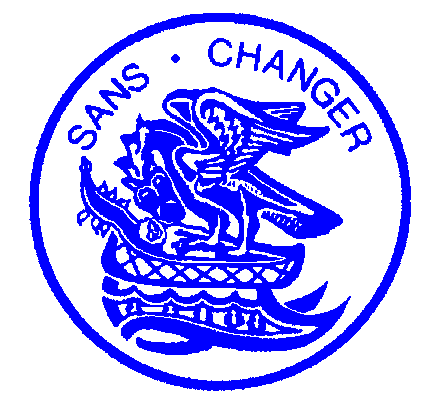
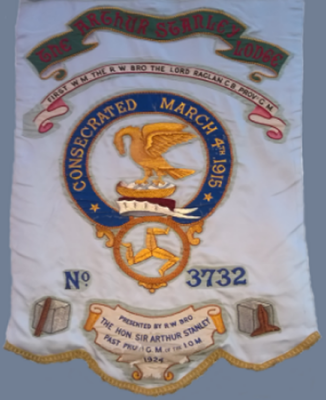
Contact:
I. A. Walker
C/O Freemasons’ Hall, Woodbourne Road Hilary Park, Douglas. Isle of Man IM2 3EE
Meetings
Meetings are held at Freemasons’ Hall, Douglas on the second Thursday in the months of October, November, December, January, February, March, April and May
Installation March
Lodge History
The Lodge was consecrated on 4 March 1915 and is named after R W Bro. The Hon. Sir Arthur Stanley, Provincial Grand Master of the Isle of Man 1902-12. The Lodge was the only one in the Isle of Man Province to be consecrated during the First World War hostilities.
Sir Arthur Stanley 1869-1947
Sir Arthur Stanley was the third son of Captain Frederick Arthur Stanley (later the 16th Earl of Derby). The 16th Earl was also a Freemason and was Governor of Canada from 1888-93. An avid sportsman he (the 16th Earl) was most famous for presenting the Stanley Cup for ice hockey and Stanley Park in Vancouver was named after him. He subsequently became Lord Mayor of Liverpool and the first Chancellor of Liverpool University.
Sir Arthur Stanley was educated at Wellington College and in 1898 was returned unopposed as Member of Parliament for the Ormskirk Division in Lancashire, retaining his seat until 1918. There is another Arthur Stanley Lodge (No 3469) which meets at Ormskirk – (West Lancs.) He became Chairman of the Royal Automobile Club from 1905-07 and 1912-36. He was the first to suggest a Code of Custom for all road users – the first version of the Highway Code – and was instrumental in bringing car racing to the Island. He was elected to the Executive Committee of the Red Cross Society and became its Chairman in 1914 and was Chairman also of the Royal College of Nursing.
He was appointed a Member of the Royal Victorian Order in 1905, a Companion Order of the Bath in 1916, a Knight Grand Cross of the Order of the British Empire in 1917, and Knight Grand Cross of the Royal Victorian Order in 1944. He was a Deputy Lieutenant and in the Commission of Peace for Lancashire.
His Masonic interests were extensive. He was initiated in the Grecia Lodge No 1105 (Egypt) on 7 January 1896; exalted in Royal Arch Masonry in Bulwer Chapter No 1968 (Cairo) on 1 April 1898; joined St George’s Lodge of Harmony No 32 (West Lancs.) on 20 December 1899 and Jerusalem Chapter No 32 (West Lancs.) in 1901. He was installed as the Worshipful Master of Lodge No 32 in 1903 and First Principal of Chapter No 32 in 1904. He had a close association with Freemasonry in the Island, joining four Lodges, Athole, Tynwald, St Trinian’s and the Spencer Walpole Temperance Lodges. He was accepted as Provincial Grand Master of the Province of the Isle of Man in 1902 and was installed in 1904 when he was Master also of St Trinian’s Lodge No 2050. He became Provincial Senior Grand Warden of the Province of Lancashire, Western Division, in 1903 and became Provincial Grand Master of that Province in 1910. He was also appointed at that time Grand Superintendent in and over the Provincial Grand Chapter of Lancashire, Western Division.
When Provincial Grand Master of the Island Province, he laid, on 28 June 1906 the foundation stone of the Ramsey Cottage Hospital. A contemporary report of the event recalls that this ‘was half day holiday in Ramsey. At 3 p.m. a procession made up of masons, officials, various brigades, clergy and local organisations ’wended its way with measured and steady tread’ from the courthouse to the hospital site. Lady Raglan, wife of the Lieutenant Governor handed the trowel to the Hon. Arthur Stanley M.P., Provincial Grand Master, who laid the foundation stone with due Masonic rites.’
It is also worthy to note that the Annual Meeting of Provincial Grand Lodge also took place in Ramsey that day.
His strong family connection with the Island – Henry V in 1406 had made a grant of the Isle of Man to the Stanley family and thirteen members of the family had been Rulers of Man – made him an excellent choice as Provincial Grand Master.
The Lodge emblem
The Lodge emblem is the eagle and child from the Stanley family crest with the motto ’Sans Changer’ – ‘without changing‘. Many legends exist about the origin of the eagle and child crest of the Stanley family and was probably taken from the crest of the Lathom family. In 1406, Sir John Stanley was granted free warren of the Manors of Lathom and Knowsley in his wife’s right. The Manor of Knowsley is still held by his descendant, the Earl of Derby, while the Manor of Lathom remained in the Stanley family until 1717 when it was sold by the daughter of William Stanley, 9th Earl of Derby. It was about this time that Sir John Stanley adopted the crest of an eagle and child which has been used by his descendants ever since.
The Warrant
The Warrant is dated 19 May 1914 and issued whilst the Duke of Connaught and Strathearn was Grand Master. It bears the names of the subscribing brethren including that of the R W Bro. Lord Raglan C.B. who was then Provincial Grand Master (1912-19), the Lieutenant Governor of the Isle of Man and of course the first Worshipful Master of the Arthur Stanley Lodge.
The Lodge Banner
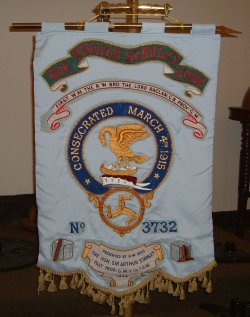
The Lodge banner was presented on 13 November 1924 by R W Bro Sir Arthur Stanley Provincial Grand Master for West Lancashire.
The Past Masters’ Jewel
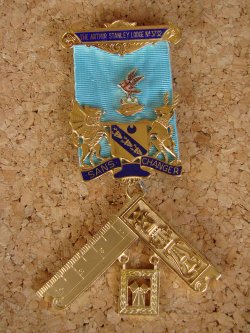
The Past Masters’ Jewel is also based on the Stanley family arms.
The Key of the Lodge
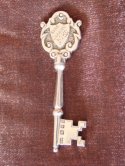
To commemorate the 21st anniversary of the consecration of the Lodge a silver key was presented on 12 March 1936 to the Worshipful Master, W Bro D F Barwell. The key bears the motto ’Sans Changer’, the Lodge number, the Eagle and Child emblem and the words Peace, Love, Harmony. The key is passed to successive Worshipful Masters on Installation nights. It is also frequently to be seen in front of the Worshipful Master at the Festive Board at regular monthly meetings.
The Consecration Ceremony in 1915
The consecration ceremony took place in the Masonic Hall, Loch Promenade, Douglas by the following officers:
Consecrating Officer: W Bro P Murray Hunter P.G.S. (West Lancs.)
Senior Warden: W Bro D Gell Pr.G.S.W.
Junior Warden: W Bro C Fox Pr.G.J.W.
Chaplain: W Bro R F Winter P.P.G.Chap. (West Lancs.)
Director of Ceremonies: W Bro E J Chambers P.G.D.C. (West Lancs.)
Secretary: W Bro F B Goodman P.G.A.S. (West Lancs.)
Inner Guard: W Bro J D Cowley P.G.St.B.
The following officers were appointed and invested at the same meeting:
Worshipful Master: R W Bro The Lord Raglan Pr.G.M.
Immediate Past Master: W Bro F B Sissons P.G.Stwd.
Senior Warden: Bro A Brittain
Junior Warden: W Bro T Knight
Treasurer: W Bro F C Poulter P.P.G.W.
Secretary: W Bro W J Fell
Senior Deacon: Bro W H Weelen
Junior Deacon: Bro J Corkill
Almoner: W Bro J H Cubbon
Organist: Bro C J Denny
Chaplain: Bro R I Reid
Asst. Secretary: Bro S Webb
Inner Guard: Bro H Stevenson
Senior Steward: Bro H Dolman
Junior Steward: Bro W Wright
Stewards: Bros G F Maley, A H Bing, D Everard, A W Quayle, J W King & J W Devereau
Tyler: Bro T Hampton
It had been hoped that the Hon. Arthur Stanley would have visited the Island for the consecration but his many public engagements precluded him from that pleasure. A committee consisting of the Worshipful Master, the Senior and Junior Wardens, the Treasurer and the Secretary was formed to draft by-laws. W Bro T Knight, JW, was elected as representative on the Provincial Committee of General Purpose. Greetings were received from the Grand Lodge of England, the Provincial Grand Lodges of the Isle of Man and West Lancashire and Lodges – Athole, Tynwald, St Trinian’s, Spencer Walpole, St Germain’s (now Glanfaba) Mona and Lord Raglan.
After the ceremony the members of the Arthur Stanley Lodge and their numerous guests celebrated the occasion by dining in the Grand Saloon of the Castle Mona Hotel. At the regular meeting on 8 April 1915, the Consecrating Officers together with RW Bro Hon. Arthur Stanley who by that time was Provincial Grand Master West Lancs., W Bro J A Brown Dep. P.G.M of the Isle of Man and W Bro W Newby Pr. G.Sec. were elected honorary members of the Lodge.
There were several regular and emergency meetings before the summer recess. The first of these took place on 12 March when Thomas Shimmin, John M Forrester and Alfred Martin became the first three candidates for Initiation. Their progress was swift with the same three being raised at the meeting on 20 May 1915.
Thomas Shimmin, the Lodge’s first candidate for Initiation, was to become distinguished as Almoner of the Lodge for many years until his death in 1958. He is well remembered by current senior brethren and this brings a continuity in the Lodge from its very earliest days right up until the present time.
The First World War years
Despite the First World War membership grew steadily as shown below.
Members & Initiates
1915: Members- 34 Initiates- 5
1916: Members- 39 Initiates- 5
1917: Members- 51 Initiates- 15
1918: Members- 70 Initiates- 15
There continued to be a number of emergency as well as regular meetings and this appeared to be an ongoing theme at the time. Indeed ion 9 March 1918 Cadet Samuel Hulme should have been initiated whilst on military leave but as the Port of Liverpool had been closed for outward sailings the Lodge was called off until 11 March and the candidate was not initiated until the meeting on 3 May 1918.
War and local organisations benefited from early charity donations and in 1916 £3.3.0 was sent to the Masonic War Hospital and a further £1.1.0 to each of the Plum Pudding and Hot Pot funds. The following year the Hot Pot Fund was again to benefit as too was Nobles Hospital with £2.2.0, the Douglas Coal Fund, Douglas Free Dinner Fund and the Douglas Boot and Clothing Fund £1.1.0 each – all not unsubstantial amounts at the time. A further £5 was sent to the London Masonic Hospital.
The Inter War Years
Membership flourished immediately following the ending of hostilities.
Members & Initiates
1919: Members 80 Initiates- 10
1920: Members- 94 Initiates- 16
1921: Members- 101 Initiates- 10
1922: Members- 108 Inititaes- 9
1923: Members- 110 Initiates- 7
1924: Members- 118 Initiates- 9
1925: Members- 118 Initiates- 7
1926: Members- 121 Initiates- 6
1927: Members- 112 Initiates- 2
1928: Members- 101 Initiates- 3
1929: Members- 94 Initiates- 3
1930: Members- 92 Initiates- 5
1931: Members- 90 Initiates- 3
1932: Members- 87 Initiates- 1
1933: Members- 94 Initiates- 4
1934: Members- 90 Initiates- 2
1935: Members- 89 Initiates- 4
1936: Members- 87 Initiates- 2
1937: Members- 87 Initiates- 3
1938: Members- 86 Initiates- 2
1939: Members- 85 Initiates- 2
As may be expected there were a substantial number of multiple ceremonies held as those candidates who had been initiated, were subsequently passed and raised. This again also resulted in a number of emergency -including one on 31 December 1923 New Year’s eve! – as well as regular meetings. Indeed, for example, the initiation of Mr R H Quayle, a marine engineer, on 3 November 1919 had to be held over until the following day as he had been detained in Liverpool due to work commitments.
Notably an emergency meeting took place on 16 August 1920 for Mr H Barwell, also a marine engineer. The minutes of that meeting state he ’had been desirous of becoming a Mason for some considerable time but owing to the fact that his ship was sailing on Government order he was not able to attend at a Regular Lodge. As the ship had just arrived in England and was sailing at an early date Mr Barwell took this opportunity of being initiated if elected.’ Bro H Barwell was raised on 13 January 1921 and D F Barwell was initiated at the same meeting. Bro H Barwell was to pay the supreme sacrifice during the Second World War – see below. W Bro D F Barwell was to remain a well respected member of the Arthur Stanley Lodge for over 70 years until his death in 1991. To date he is distinguished as being the longest serving member of the Lodge.
The early 1920’s saw the building of the new Masonic Temple in Woodbourne Road and on 12 May 1921 it was proposed that the Arthur Stanley Lodge should give a guarantee of £105 towards building. A further £100 was invested from Lodge funds on 8 May 1924 with other sums of £52.10.0 and £200 in 1925. A resolution was passed on 10 April 1924 ‘that the place of meeting of the Lodge be removed from the Masonic Hall, Loch Promenade, Douglas to the Freemasons’ Hall, Woodbourne Road, Douglas; such removal to take place in October 1924 or as soon thereafter as may be find convenient.
Visits were received from various other lodges on the Island, notably Mona (1918), Rushen (1922), Glanfaba (1928 and 1930) and St Maughold (1930).
At the November 1930 regular meeting discussion took place over payment of the balance of the quota of £304 due to the Million Memorial Scheme. Of this amount £119 had been collected leaving a balance of £185 from funds – a substantial amount at that time.
The April 1933 meeting learned of the arrangements for the opening and dedication of the Masonic Peace Memorial (Grand Lodge in Great Queen Street).
In January 1935 there appears to be the first reference to undertaking a 3rd degree ceremony with Past Masters standing in for the regular officers.
The Second World War years
On the declaration of War the regular meeting due to be held in October 1939 was suspended. However this suspension was short lived and at the 9 November 1939 meeting a letter from the Provincial Grand Master stating that lodge meetings could resume was read out. The outbreak of War did not prevent candidates coming forward and three were proposed at the December 1939 meeting. Membership continued at a steady rate with both regular and emergency meetings again being a feature of the time.
Members & Initiates
1940: Members- 88 Initiates- 2
1941: Members- 88 Initiates- 4
1942: Members- 89 Initiates- 4
1943: Members- 91 Initiates- 3
1944: Members- 98 Initiates- 6
1945: Members- 104 Initiates- 6
Two brethren paid the supreme sacrifice during the War effort. Bro H Barwell (noted above) and Bro P Cannell (initiated 13 November 1930) were lost during the Dunkirk Evacuation on 28 May 1940. Bro Barwell was Chief Engineer of the Isle of Man Steam Packet vessel Mona’s Queen which sank in just 90 seconds early that morning causing great loss of life to her Manx crew.
The War also caused the lodge to be called off during an air raid warning. This was due to the return flight of enemy aircraft from a raid on the Belfast shipyards. Under an emergency Home Office directive the electric lights were put out in Freemasons’ Hall and hurricane lamps were used in place. Freemasons’ Hall was also in use as a first aid post with beds around the main hall.
The Post War years
As with the ending of the First World War there was a tremendous revival in the interest in Freemasonry and Arthur Stanley Lodge was to enjoy the success of this period as membership over the 25 years would show:
Members & Initiates
1946: Members- 107 Initiates- 5
1947: Members- 109 Initiates- 4
1948: Members- 109 Initiates- 2
1949: Members- 112 Initiates- 4
1950: Members- 114 Initiates- 3
1951: Members- 116 Initiates- 4
1952: Members- 119 Initiates- 3
1953: Members- 117 Initiates- 3
1954: Members- 119 Initiates- 2
1955: Members- 120 Initiates- 3
1956: Members- 116 Initiates- 3
1957: Members- 113 Initiates- 3
1958: Members- 109 Initiates- 2
1959: Members- 106 Initiates- 4
1960: Members- 97 Initiates- 4
1961: Members- 101 Initiates- 3
1962: Members- 99 Initiates- 2
1963: Members- 100 Initiates- 3
1964: Members- 97 Initiates- 3
1965: Members- 95 Initiates- 2
1966: Members- 96 Initiates- 3
1967: Members- 95 Initiates- 2
1968: Members- 97 Initiates- 2
1969: Members- 97 2
1970: Members- 94 3
1971: Members- 90 3
Naturally in addition to all these ceremonies of Initiation taking place, there would again be ceremonies of passing and raising which in addition to the annual Installation meeting would mean there was plenty of work for the Worshipful Master and his officers.
The early post war years continued to be a time of austerity and at the 9 October 1947 meeting the brethren learned that in accordance with the Meals (Service at Social Functions) Order 1947 the Provincial Grand Master had requested:
- No Ladies’ evenings
- Installation – there to be no more than 100 diners and the meal to be of a simple character
- During the winter months it may be desirable to cut out the meal but this was to be left to the Lodge’s discretion – but it would serve as a good example to others if Freemasons carried out the order in spirit as well as to the letter
One month later at the 13 November 1947 meeting the Lodge was addressed on ‘the loss suffered to the Craft and this Lodge in particular, that of the death of the Hon. Sir Arthur Stanley’.
At the March 1952 meeting it was moved that a grant of £75 be made as part of a total of £1000 from the Province as a whole to the RW Bro Deemster W P Cowley on completion of 21 years as Provincial Grand Master towards such Masonic charity or charities as he may determine.
The Lodge celebrated its golden jubilee in 1965 with a donation of £105 to the Royal Masonic Benevolent Institution. To show the effects of inflation since that time, for the 75th anniversary the Lodge presented £1200 to Provincial charity. Funds are now being set aside to celebrate the Arthur Stanley Lodge centenary in 2015.
The effects of inflation can also be seen in that the price of meals at the Festive Board doubled from 50p to £1 in 1976. By 1981 meals then priced at £1.75 were increased to £2.25 and to £3.50 by 1987. In 2008 they are £15.
On the subject of money, the Lodge raised £500 in 1986 to mark the centenary of the Provincial Grand Lodge of the Isle of Man.
Inflation up to the mid 1970’s also had an effect on annual subscriptions and the fee for initiation – the latter in particular being not an inconsiderable proportion of the average man’s income:
Subscription & Initiation Fee
1942: Sub- £3. 3.0. Ini- £15.15.0.
1950: Sub- £3.13.6. Ini- £18.18.0.
1956: Sub- £4.14.6.
1964: Sub- £5. 5.0. Ini- £21. 0.0.
1966: Sub- £6. 6.0
1973: Sub- £10.0.0. Ini- £30. 0.0.
The Present (2023)
There are currently some 24 members of the Lodge.
A number of members are distinguished by the length of time they have been in the Arthur Stanley Lodge. There are currently two with over 65 years’ service, two with over 60 and a further two with over 50 years’ membership – a tremendous achievement by each one of them.
Meetings take place on the 2nd Thursday each month from October to May at 6.45 p.m. with the exception of the Installation meeting in March which usually begins at 5 p.m. In the most recent years there has been a modest stream of candidates for initiation. Lodge of Instruction is held on Mondays from September until May (Committee Meeting nights excepted). The Lodge Committee meets on the Monday following the monthly Lodge meeting.
The Lodge social calendar usually includes a Ladies evening or dinner dance held in February and an annual church service during the spring which is followed by supper. Over the past few years the formalities at the December meeting have been kept to a minimum so that wives and other guests may join the brethren for a meal.
For a number of years the Lodge has been ’twinned’ with Lezayre Lodge No. 6890 which meets in Ramsey. Brethren of the Lezayre Lodge are usually invited to Arthur Stanley Lodge each January which is a Past Masters’ evening with the brethren of this Lodge visiting Lezayre for their meeting at the beginning of April.